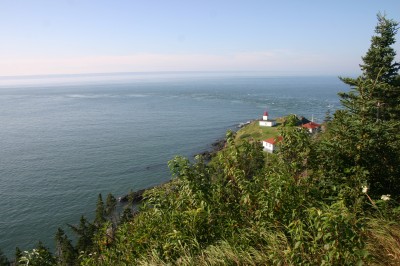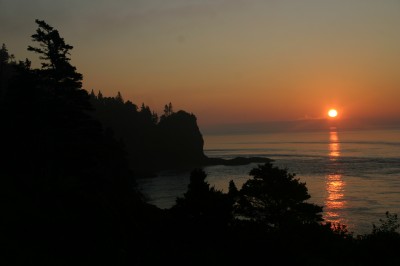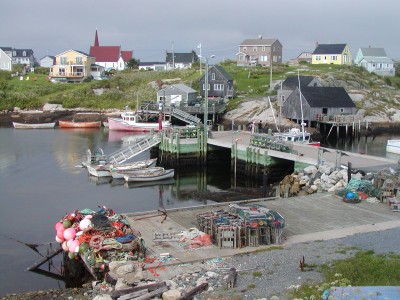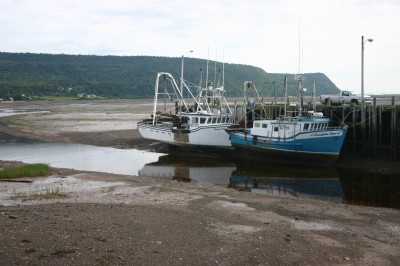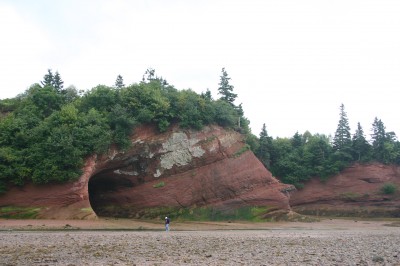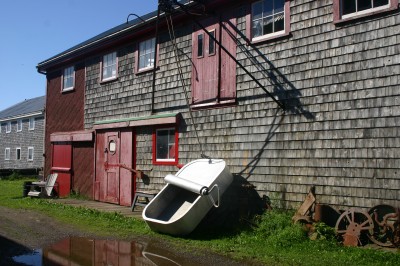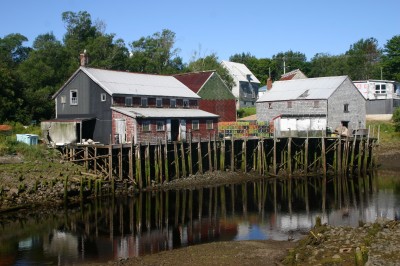During my travels through New Brunswick and Nova Scotia I stay at bed & breakfasts. I have been incredibly lucky to have chosen ones that have beautiful locations, sumptuous breakfasts and great hospitality.
One of the places I sleep in is a former lighthousekeeper guest house. It is located right on the edge of the cliff at Cape d’Or in Nova Scotia and provides amazing views of the water and the sky.
A peregrine falcon perches on a lofty rock, scouting the area for food. Eider ducks bob on the restless water. Salty waves crash against the rocks. Then the fog rolls in, smothering the sights and dampening the sounds. The fog horn bleats mournfully into the misty stillness. Next morning I furtively wander out in my nightdress to catch the sunrise in the clear morning sky with my camera before crawling back into bed.
The tides in the Bay of Fundy have influenced the life of the people living on its shores.
For generations, fishermen have taken advantage of the tides to set weirs (a kind of fishing net) at low tide. When the high tide washes in, the fish are lured into and caught in the weirs, ready to be gathered in by the fishermen at the next low tide.
The Acadians discovered that the tides also brought in nutrient-rich soil. They built a series of dykes called aboiteaux that made it possible to dam and create new and fertile farmland.
French versus English
And who were the Acadians, you might ask? They were French settlers who had come over to Eastern Canada starting in the late 1600s. The land they settled they called Acadia. The English called it Nova Scotia. What the native people, the Mi’kmaq, who had already been there for thousands of years, called the land, neither the French nor the English were concerned about at that time.
At any rate, back in Europe, the English and the French were battling each other for power in the New World, which affected relations in Nova Scotia/Acadia. It’s a long, sad and involved story that culminated with one of the dark chapters in Canadian history: the expulsion of the Acadians. About 10.000 French-speaking Catholic farmers were kicked out of Nova Scotia by the Brits.
The Acadians ended up in places as far-flung as South America and Europe. Some of the Acadians (pronounced Acajuns in Canada) ended up in Louisiana, where they brought along their French cooking skills. The Acadian recipes mingled with the local spicy fare and evolved into Cajun cuisine for which the area is now famous.
Fortunately for them, many Acadians families found their way back to their roots in Acadia – sometimes generations later – where they now proudly display the Acadian flag alongside a New Brunswick or Nova Scotia flag and a Canadian flag. Farming and fishing still play important roles but less so than in times of yore.


